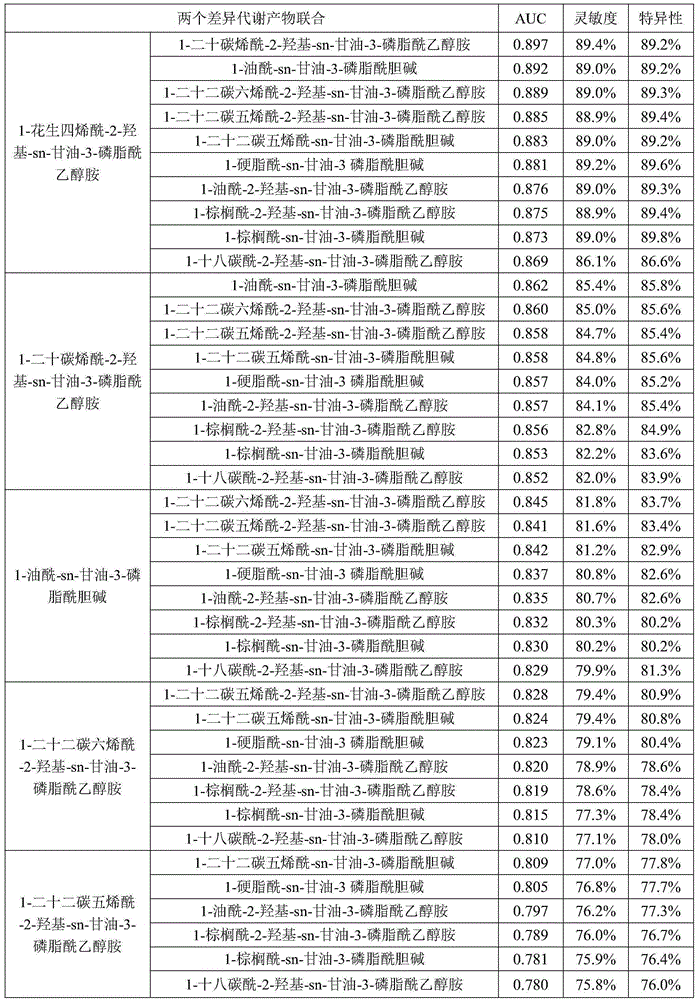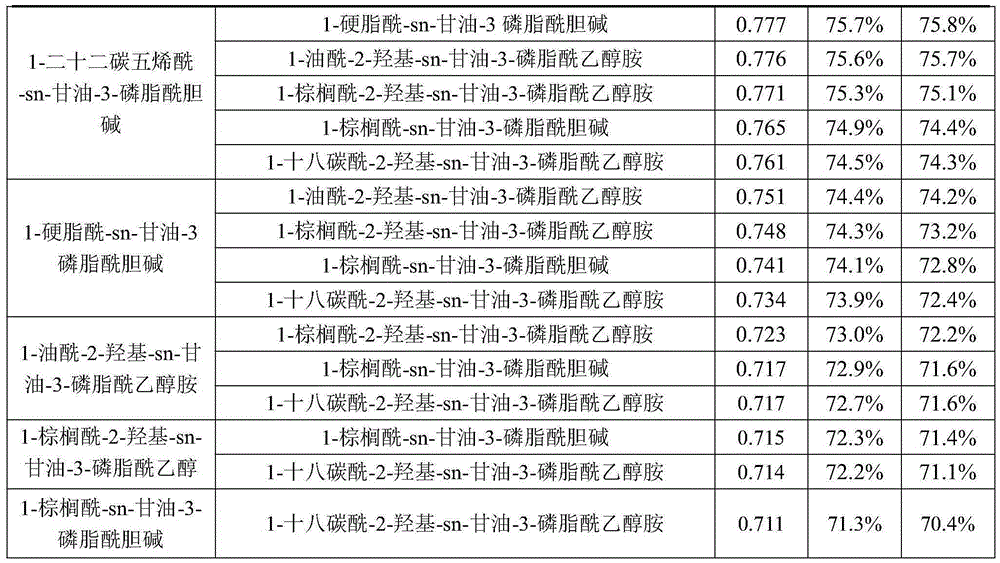Metabolic marker for diagnosis of coronary atherosclerosis
A technology of coronary atherosclerosis and metabolic markers, applied in the field of biochemistry, to achieve the effect of improving the convenience of diagnosis, accurate and reliable results, and promoting standardization
- Summary
- Abstract
- Description
- Claims
- Application Information
AI Technical Summary
Problems solved by technology
Method used
Image
Examples
Embodiment 1
[0025] Example 1: Screening and Characterization of Differential Metabolites in Plasma Between Patients with Coronary Atherosclerosis and Healthy Individuals
[0026] 1. Objects and methods
[0027] 1. The source of the specimen
[0028] After obtaining the consent of the patients, the peripheral venous blood plasma of 480 patients with coronary atherosclerosis and 350 healthy people in Jiangsu Provincial People's Hospital from September 2010 to June 2015 was collected. All patients or healthy people were confirmed by coronary angiography. The age and sex of healthy people were matched with patients with coronary atherosclerosis. All patients with coronary atherosclerosis and healthy people have normal heart, lung, liver, kidney and hematopoietic functions.
[0029] The time of blood collection was in the morning on an empty stomach.
[0030] 2. Main reagents
[0031] Acetonitrile and formic acid (UPLC pure) were purchased from ROE Company in the United States; chromatogra...
Embodiment 2
[0052] Example 2: Constructing a ROC curve to compare the ability of 11 differential metabolites to diagnose and distinguish coronary atherosclerosis patients from healthy people
[0053] The receiver operating curve (ROC) method was used to verify the ability of diagnosing coronary atherosclerosis by the expression levels of 11 differential metabolites in the plasma of patients with coronary atherosclerosis and healthy people. The results showed that 1-arachidonoyl-2-hydroxy-sn-glycero-3-phosphatidylethanolamine, 1-eicosenoyl-2-hydroxy-sn-glycerol-3-phosphatidylethanolamine, 1-oleoyl -sn-glycerol-3-phosphatidylcholine, 1-docosahexaenoyl-2-hydroxy-sn-glycerol-3-phosphatidylethanolamine, 1-docosapentaenoyl-2-hydroxy- sn-glycerol-3-phosphatidylethanolamine, 1-docosapentaenoyl-sn-glycero-3-phosphatidylcholine, 1-stearoyl-sn-glycero-3-phosphatidylcholine, 1-olein Acyl-2-hydroxy-sn-glycerol-3-phosphatidylethanolamine, 1-palmitoyl-2-hydroxy-sn-glycerol-3-phosphatidylethanolamine, 1...
Embodiment 3
[0064] Example 3: Application in Screening Drugs for Treatment or Alleviation of Coronary Atherosclerosis
[0065] The plasma of 155 patients with coronary atherosclerosis before and after drug treatment was detected, and the results showed that: with the increase of the course of drug treatment, the patient's condition was gradually relieved, and the concentration of 11 metabolic markers provided by the present invention in plasma The level tends to the level of healthy people gradually, and there is no significant difference between the plasma level of healthy people after complete cure (P>0.05). This result is consistent with the detection results of coronary angiography. Therefore, the metabolic markers provided by the present invention can be used to screen drugs for treating or alleviating coronary atherosclerosis.
PUM
 Login to View More
Login to View More Abstract
Description
Claims
Application Information
 Login to View More
Login to View More - R&D
- Intellectual Property
- Life Sciences
- Materials
- Tech Scout
- Unparalleled Data Quality
- Higher Quality Content
- 60% Fewer Hallucinations
Browse by: Latest US Patents, China's latest patents, Technical Efficacy Thesaurus, Application Domain, Technology Topic, Popular Technical Reports.
© 2025 PatSnap. All rights reserved.Legal|Privacy policy|Modern Slavery Act Transparency Statement|Sitemap|About US| Contact US: help@patsnap.com


